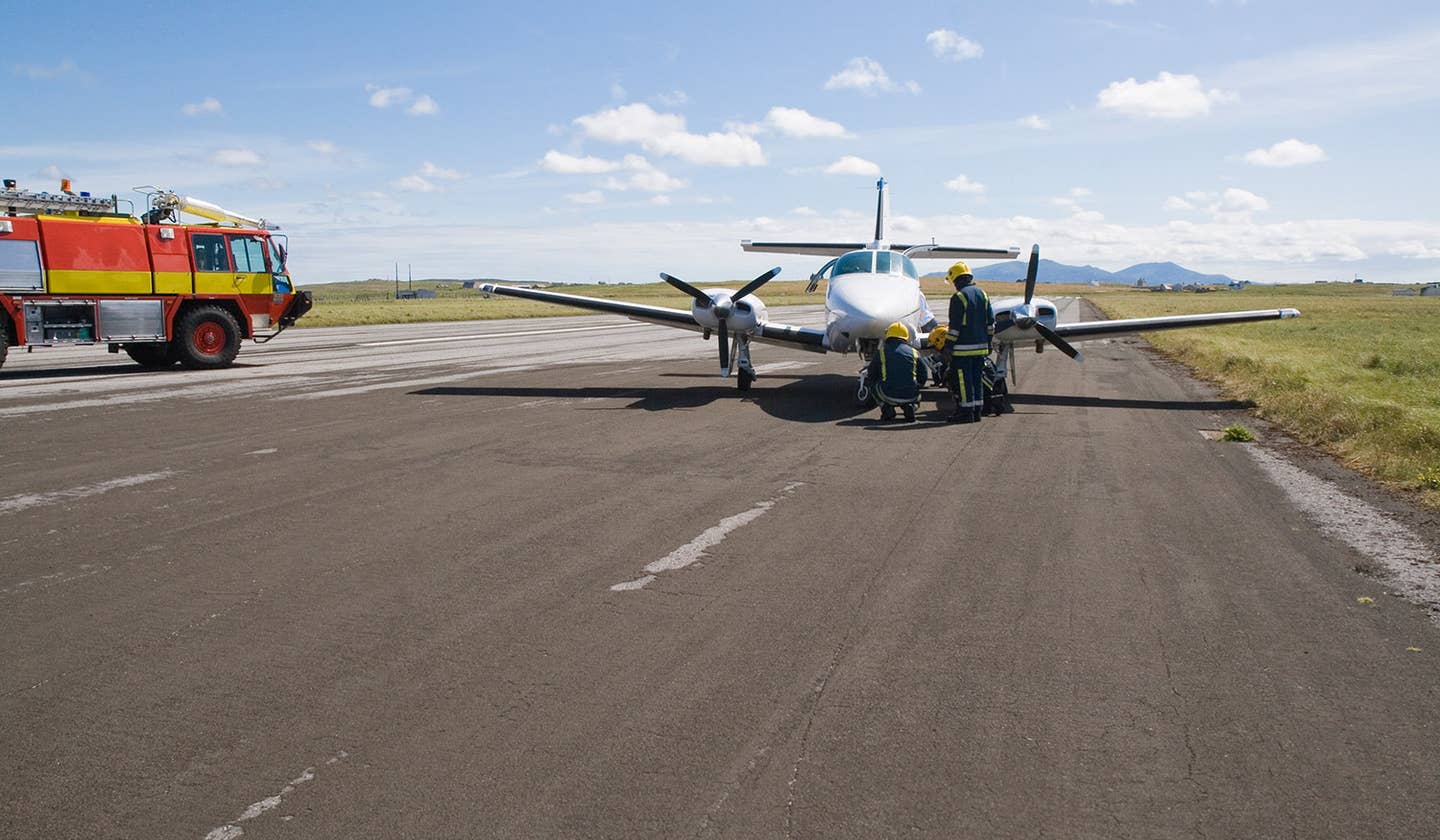
Landing losses are a persistent issue, according to the insurance industry. iStock
General aviation pilots are having problems landing their airplanes. According to the insurance industry, landing losses - accidents and incidents in which aircraft are damaged during the landing phase - continue to be a persistent issue. What's going on here?
Hang out at your local airport on a windy day and it won't take long to observe that many pilots struggle with crosswind landings. For some, this lack of skill is due to inadequate primary training. Maybe their young, inexperienced flight instructor wasn't comfortable teaching in windy conditions so they avoided it as much as possible. Most crosswind landing mishaps, however, are the result of rust accumulation and poor decision-making: The pilot hasn't practiced the proper technique in months, maybe even years, and one day finds himself with his hands full returning from a pancake breakfast with his friends in a rental airplane that's about to become the subject of an insurance claim.
According to National Transportation Safety Board statistics, general aviation airplanes were involved in 281 landing accidents in 2014, nearly one-third of the total noncommercial fixed-wing accidents that year. Loss of directional control on landing accounted for more than half of these. Landing with the gear retracted is a statistically less likely event, but potentially one of the most expensive because it almost always requires replacement of a bent propeller and a complete inspection and overhaul of the engine, along with other repairs.
In June 2017, the pilot of a Piper Cherokee 140 lost control of the airplane while attempting to land in an 8-knot crosswind. According to the accident report, the pilot reported that a wind gust "picked up" the right wing and "spun" the airplane to the left, where it veered off the left side of the runway and came to rest in a ditch. The airplane sustained substantial damage to the forward portion of the fuselage. The 65-year-old pilot reported 359 total flight hours, with 200 in make and model. While he did report some recent experience, for all we know, the last time he demonstrated proficiency at crosswind landings was during his private pilot practical test.
How can landing accidents like this one be prevented? Below are a few tips.
If you're not comfortable landing in a crosswind, schedule a lesson with an experienced flight instructor. If you don't have an established relationship with a flight instructor, ask other pilots for referrals. On the day of your training flight, your instructor should conduct a thorough ground briefing with you on current conditions, the airports and runways to be used for the exercise, and the recommended final approach speed and flap setting for your airplane. Discuss the meaning and use of a slip and how to properly position the ailerons and rudder during the approach, landing and rollout.
Manage your airspeed, taking into consideration reported surface wind speed and direction. The FAA Airplane Flying Handbook recommends adding one-half the gust factor to your final approach speed. For example, if the normal approach speed in your airplane is 80 knots and you are attempting to land in a crosswind reported at 10 knots gusting to 20 knots, the "gust factor" is 10 knots, so you should plan your approach at 85 knots.
Always be prepared to execute a safe go-around anytime the landing doesn't feel right, especially if you lose directional control or the airplane "balloons" before touchdown. Practice balked landings on your own or with an instructor regularly.
You might also consider getting some experience flying a tailwheel airplane to master timely and correct rudder usage during a crosswind approach and landing.
Know your personal limitations, and stick with them. Recognize that a 10-knot direct crosswind might not be a big deal to an experienced pilot in a heavy airplane but might present significant challenges to a rusty pilot flying a light aircraft.

Sign-up for newsletters & special offers!
Get the latest FLYING stories & special offers delivered directly to your inbox






